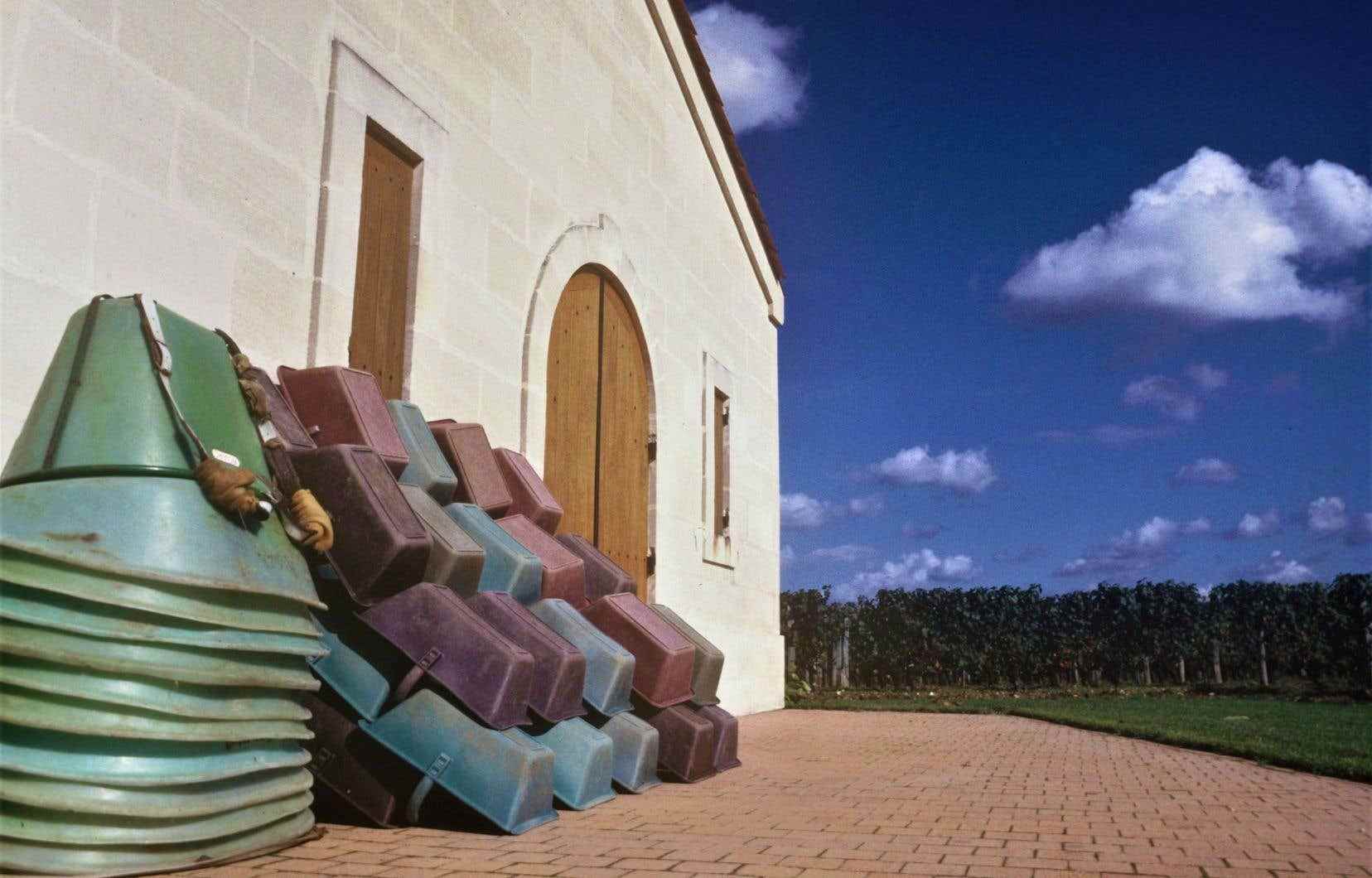Rotate grape varieties
rotate
Above the glasses
turn these pages
Beyond the verses
Like so many vine leaves
Telling about the time of wine to come…
You will read these lines while I will be in the front row in Bordeaux to experience an extraordinary 2022 harvest. Where are we going ? Too early to tell about the wine to come. But the scorching peaks of an unbridled and “spicy” summer under the monster fires of July and August in Gironde already make it possible to affirm that nothing will ever be the same again. Before ? Before 1982 and Robert Parker, also before 2003 and its Vinexpo where I remember, in the parking lot of the trade fair in question, my shoes literally swallowed under the molasses of a bitumen madly in love with my soles.
Let’s cut through the junk euphemisms to tell it like it is. Under the sign “climate change” (which affects vineyards, but also, of course, market gardening and other productions) the expression “climate disaster” can now be read. Losses of yields, loss of income, loss of jobs are already commonplace. But also loss of bearings, of identities. They reshape the well-established profile of regions, vineyards, grape varieties, in short, appellations contrôlées now losing control of their famous “typicity”.
Where is Bordeaux in this pot? Light years away from the low degrees and under-ripe berries offered by a majority of wines, certainly digestible and light, but also sometimes thin and narrow, which had a gable on the glass in the middle of the 20th century.e century. Will Syrah, Grenache Noir or Tempranillo dethrone, for example, Merlot on the Right Bank or will irrigation – provided that water resources are available – be systematic to support a biodiversity that has now been disrupted?
The man, who always imagines being one step ahead of nature, is still clever. Two millennia of viticulture cannot be erased by shouting scissors or pruning shears. The contemporary Burdigala has never delivered so many beautiful bottles, from the most modest to the most sumptuous, and this, in a wide range of prices. Cultivation practices are changing (size, density, etc.) while agroforestry and the transition to organic are developing sustainably, but the pitfalls remain. Hailstorms and torrential rains in summer create violent contrasts far beyond what the vines can withstand. The saying that “the vine delivers the best of itself when it suffers” is outdated. She just wants to have peace today. It’s gone badly.
My only regret, while I am there, is not having been able to meet the more-than-singular Jean-Pierre Boyer at Château Bel-Air Marquis d’Aligre, in Margaux, although I slept on the paved in front of the domain gate. But, back stewed or not, I’ll talk to you when I get back from Pontet-Canet, Haut-Bailly and Lafite, but also about a nice string of other Médoc wines. In the meantime, to accompany your Sunday roast beef, I leave you with this Charme de Cos Labory 2016, near Saint-Estèphe ($42.75 – 15029834 – (5) © êêê 1/2 ), dominated by a Cabernet Sauvignon melted and beautifully ripe, fresh and finely spiced, already remarkably full.
A great gentleman passes away
Christian de Billy was sparkling, but above all a class, a refinement like the fine wine of Champagne. He boarded a last train of bubbles on August 26, leaving to the men behind him, entangled in a planet that is going down the drain, these many vintages of Pol Roger carved in his image. And they will need it.
Our numerous encounters were built not only on the complexity of execution of the famous Épernay wine, but also on its “emotional grip”, like an exhilarating foaming on the person who experienced it.
For the record, Christian de Billy, son of aviation officer Jean de Billy and Antoinette Pol-Roger, joined the Maison Pol Roger, then, in 1955, married Chantal Budin, whose family owned a neighboring house, also very prestigious: Perrier-Jouët.
